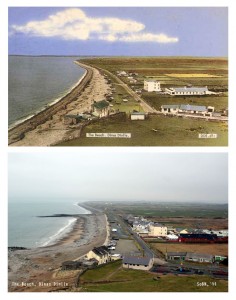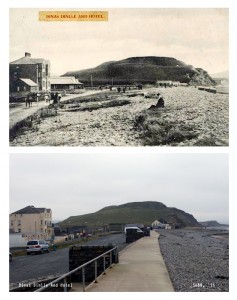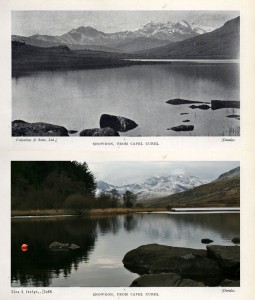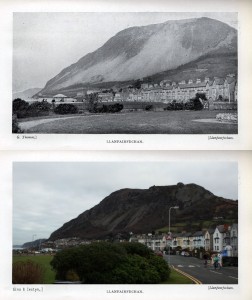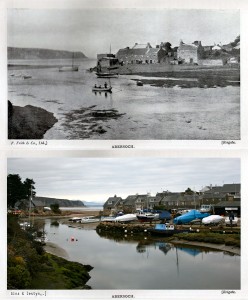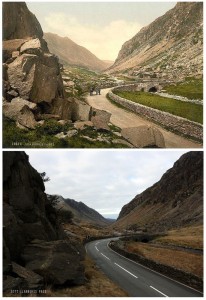Lovers of the open sea should walk out to Dinas Dinlle, on the Caernarvon Bay shore. Take the Pwllheli main road as far as the fifth milestone, and shortly after that the road bearing to the right. By taking train to Llanwnda the walking distance may be reduced to 2 1/2 miles, or the bus to Llandwrog reduces it to little ore than a mile. The sands are of the best, and the views of Snowdonia superb.
The antiquarian interest too, is considerable. Here Watling Street ended. It’s modern representative is the stony track to the immediate right of the building that was the Caernravon Bay Hotel. Dinas Hill is an old roman encampment.
Well! This little wee book brings out every kind of knowledge. My parents live really close to Dinas Dinlle, so I know the place very well – spending most of my summers here, swimming in the sea with my friends, I love the place. I have a massive attachment to it, as nowadays, I come down pretty much everyday (when I’m at my parents house) to go for a run, or take some photographs.
I never knew that Watling Street ended here, an ancient trackway in Wales & England. Dinas Hill has always fascinated me. It’s being eroded away now, very quickly (as the photos above also shows) – the sea bashes it every year, and you can literally see chunks sliding down. It gives really nice views of Snowdonia, especially the Nantlle Ridge, and Snowdon itself. Tiss a nice wee place.
Picture wise, there’s two main differences, more people now come to Dinas Dinlle – in terms of living there, and holidays, as we can see more houses and a huge caravan park on the first picture. The main thing on the ‘now’ picture of ‘Dinas Dinlle from Dinas Hill’ is the addition of the wave breaker. I remember as a kid going down to the beach, and the person in charge of doing these wave breakers was no other than my granddad. He’s a Welsh farmer, but did some jobs for the Local Council back in the day – and he was the one with his digger, moving and shaping the whole breaker. Good man. He was also in charge of doing the walkway that can be seen on the second image. So it’s nice to know that Taid did some major work here, as it has helped to get some super nice sand to play in on the beach.
